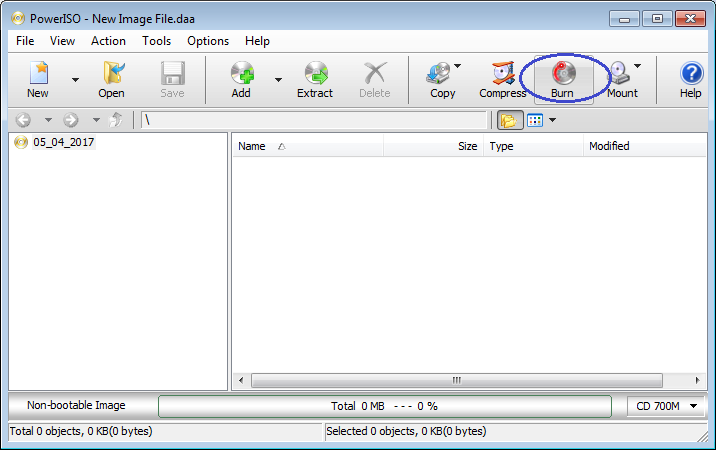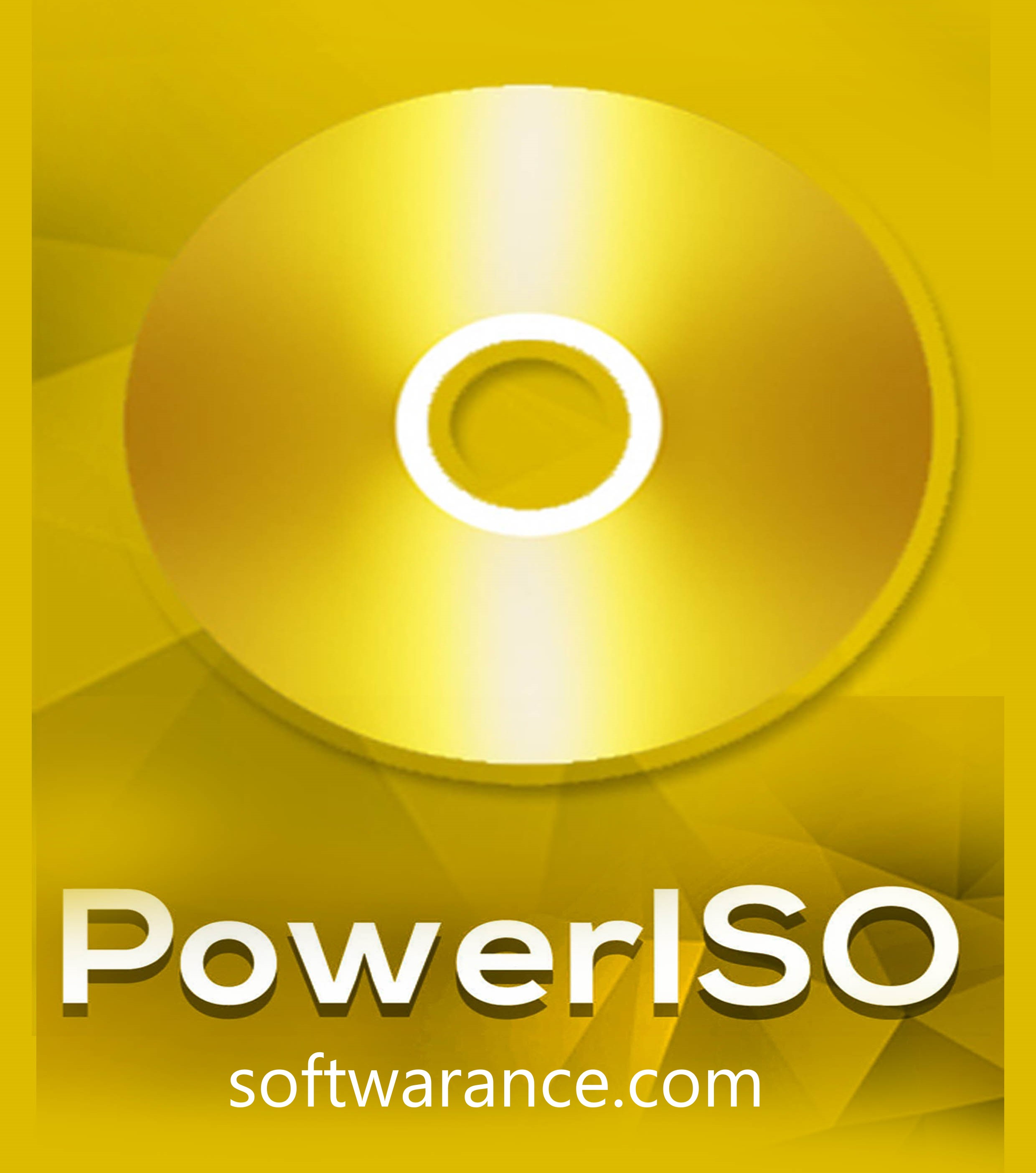

- #Make bootable cd from iso for mac using poweriso install
- #Make bootable cd from iso for mac using poweriso windows 10
- #Make bootable cd from iso for mac using poweriso Pc
- #Make bootable cd from iso for mac using poweriso windows 7
- #Make bootable cd from iso for mac using poweriso windows
Unmount of all volumes on disk9 was successfulĪnd to boot it on the PC as shown below. Looks good! What’s left now is to eject the USB stick: :/ $ diskutil unmountDisk /dev/disk9 Just to get an idea that the copy was successful, let’s run the df command again to make sure the USB stick has roughly the same amount taken up now – 4.1GB as per output fragments in previous step. If you remember, in Step 3 we did the df command and the USB filesystem /Volumes/WIN10 was empty. The copy will take good 10-15min: $ sudo cp -r. That’s exactly where you are if you just completed Step 4. IMPORANT: you should be in the /Volumes/CCSA_X64FRE_EN-US_DV5 directory when running this command below. Right, now we have to copy all the files from DVD ISO image onto our new USB stick.
#Make bootable cd from iso for mac using poweriso windows
:/Volumes/CCSA_X64FRE_EN-US_DV5 $ lsĪutorun.inf boot bootmgr bootmgr.efi efi setup.exe sources supportĮxcellent! Step 5: Copy Windows files onto USB stick Go into that folder and do ls to make sure you can see Windows DVD files there: :/Volumes/SSD $ cd /Volumes/CCSA_X64FRE_EN-US_DV5/ You should now have it mounted under folder like this: :/Volumes/SSD $ df -h | grep EN-US You’ll have the MacOS Finder window with Windows ISO content pop-up, just ignore it and go back to the terminal. Simply go to the directory where you have the ISO image and run the open command for it: :/Volumes/SSD $ open. Great stuff, now we’re moving to the next phase: we need to mount the Windows ISO image as a folder and then copy all the files onto the freshly formatted /Volumes/WIN10 USB stick. You’ll have the new filesystem mounted automatically, as you can see it’s empty (1.1MB used of 14GB): :/ $ df -h | grep disk9 This single command will erase the USB stick, make it bootable by adding a Master Boot Record (MBR) and create a Windows-friendly filesystem (FAT) on it: :~ $ diskutil eraseDisk MS-DOS "WIN10" MBR disk9įormatting disk9s1 as MS-DOS (FAT) with name WIN10 Step 3: format USB stick for Windows boot If you’re burning a Linux ISO, skip this and go to the Creating Linux bootable USB section below, it has its own steps. IMPORTANT: these steps are only needed for Windows ISOs. Sure enough, it’s mounted as /Volumes/NONAME! Creating Windows bootable USB This time I can see there’s a disk9 showing up, with 64GB of size which matches my USB stick size: :/ $ diskutil listĬhances are, your USB stick has a PC standard FAT16/FAT32 filesytem, and will be mounted automatically. :/ $ diskutil listĢ: Apple_APFS Container disk1 500.0 GB disk0s2Ġ: APFS Container Scheme - +500.0 GB disk1ġ: APFS Volume Macintosh HD 466.2 GB disk1s1Ģ: Apple_APFS Container disk3 29.8 GB disk2s2Ġ: APFS Container Scheme - +29.8 GB disk3Ġ: Apple_partition_scheme +173.1 MB disk4ġ: Apple_APFS Container disk6 80.0 MB disk5s1Ġ: APFS Container Scheme - +80.0 MB disk6ġ: APFS Volume Raven-Core 70.1 MB disk6s1ġ: Apple_HFS F-Secure XFENCE 18.1 MB disk7s1Ģ: Apple_HFS Backups 3.0 TB disk8s2 Step 2: Insert USB stick an re-run diskutil list This is simply so that you can run the same command again after inserting USB and easily spot the USB device. Use the diskutil command to list all disks and partitions on your Mac. Step 1: Confirm partitions before inserting USB
#Make bootable cd from iso for mac using poweriso windows 10
Windows 10 is a very specific bootable media, so the process is a bit involved. All of these need to be done in the Terminal app.

Here are the steps I had to take on my MacBook, originally procedure was written in macOS High Sierra, but I tested it in MacOS Mojave 10.14.2 as well. This approach will be simpler for any other ISO image like Ubuntu or CentOS, so there’s a separate Steps 3-5 for them at the end of the post.
#Make bootable cd from iso for mac using poweriso install
Since it’s possible to boot and install Windows 10 from USB, that’s what I decided to do: download Window 10 ISO and burn it one of the USB sticks I have.
#Make bootable cd from iso for mac using poweriso windows 7
I needed to reinstall one of my Windows PCs at home recently, and realised that I only have Windows 7 DVDs, but no Windows 10s.


 0 kommentar(er)
0 kommentar(er)
